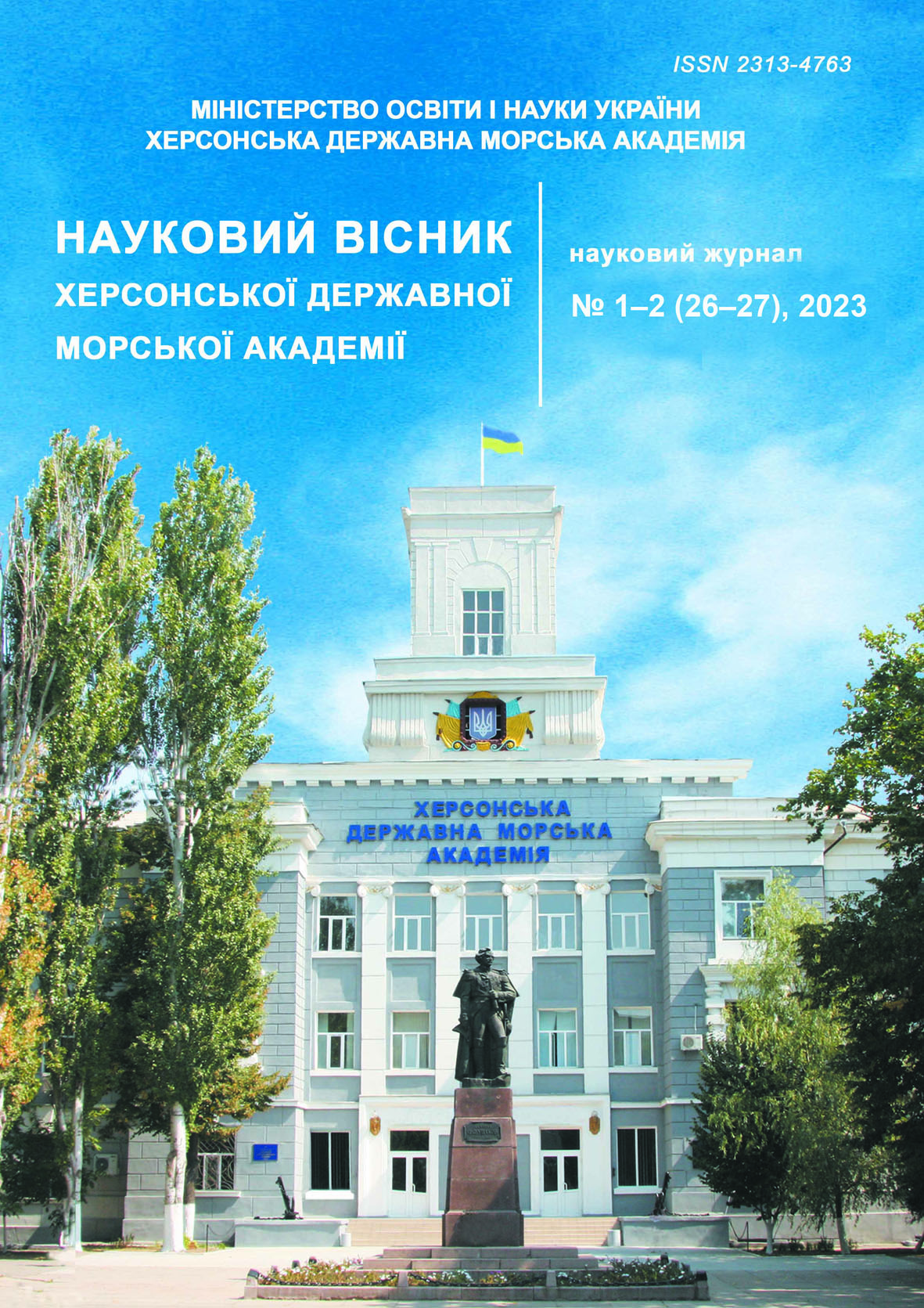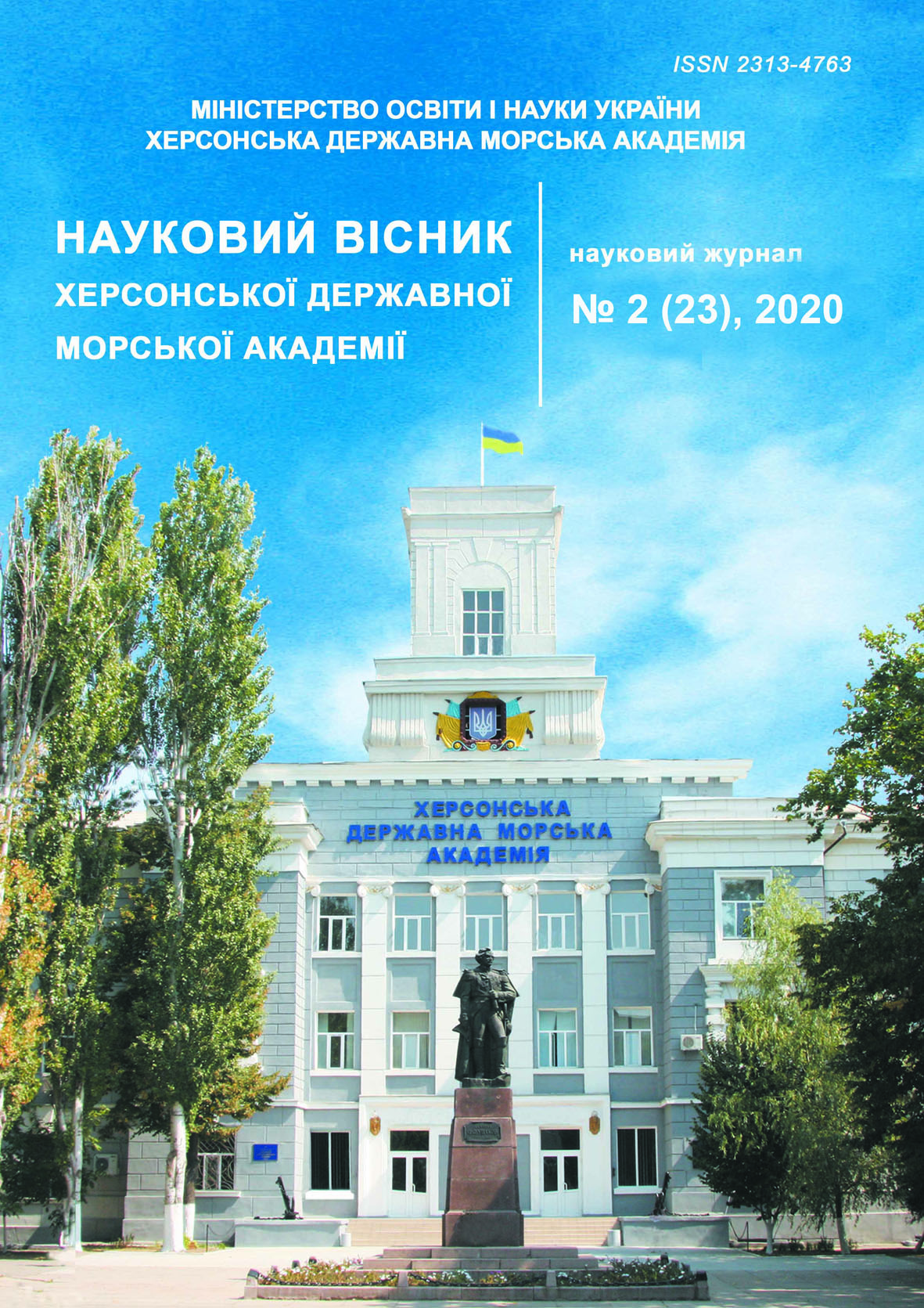ANALYSIS OF DYNAMIC PARAMETERS OF SHIP LIFTING MECHANISMS
https://doi.org/10.33815/2313-4763.2020.2.23.119-125
Abstract
Asynchronous machines are used primarily as motors. Due to their increased reliability and simplicity of design, they are widely used in industry and on ships of the marine fleet, being the main consumers of electrical energy. Despite these advantages, they also have disadvantages, of which the most significant are poor controllability and poor starting characteristics. And, if using a modern power electronic base it is possible to create drives with high control parameters, then a relatively small starting torque and very significant starting currents are a serious obstacle to the use of an asynchronous drive in lifting mechanisms due to the limited capacity of the ship power plant. To obtain satisfactory starting characteristics, electric drives are mainly used on the basis of deep-pit and two-cell engines, however, they have relatively low starting torques and significant starting currents, which causes rather large and relatively long dips in the onboard voltage. An alternative to such motors can be a motor based on a massive ferromagnetic rotor, which has a significant starting torque at a relatively small multiplicity of the starting current. Analysis of the electromagnetic processes of such an engine shows that the inner part of the rotor does not take part in the creation of the torque, therefore it is advisable to manufacture it in the form of a thick-walled hollow ferromagnetic glass. An engine with a double-layer rotor, which is a classic squirrel cage with a massive ferromagnetic cylinder mounted on it, in which starting characteristics are determined mainly by a ferromagnetic cylinder, and the operating characteristics - by the parameters of a squirrel cage, can serve as a compromise version of an engine with increased starting characteristics with good performance characteristics. The article clarifies the method for determining the dynamic torque and, on its basis, the engine start-up time, as well as an attempt to optimize the choice of the wall thickness of the ferromagnetic rotor, depending on the requirements imposed on it in terms of starting and operating characteristics.
References
Чекунов К. А. Судовые электроприводы и электродвижение судов. Ленинград : Судостроение, 1989. 464 с.
Савенко А. Е. Судовые электроприводы : учеб. пособие. Керчь : ФГБОУВО «Керченский государственный морской технологический университет», 2019. 220 с.
Hughes A., Drury B. Electric Motors and Drives: Fundamentals, Types and Applications. Newnes, 2013. 440 p.
Ищенко И. М., Голощапов С.С. Расчет асинхронного двигателя с омедненным массивным ферромагнитным ротором. Науковий вісник Херсонської державної морської академії : науковий журнал. Херсон : Херсонська державна морська академія, 2017. № 1 (16). С. 121–125.
Куцевалов В. М. Вопросы теории и расчета асинхронных машин с массивными роторами. Москва – Ленинград : Энергия, 1966. 304 с
Мезин Е. К. Судовые электрические машины : учебник. Ленинград : Судостроение, 1985. 320 с.
Олейников А. М., Мартынов В. Н. Судовые электрические машины. Севастополь: СевНТУ, 2010. 316 с.
Кацман М. М. Электрические машины : учебник Москва : Изд. Центр «Академия», 2013. 496 с.
Вольдек А. И., Попов В. В. Электрические машины. Машины переменного тока. Санкт Петербург : Питер, 2008. 350 с.
Гольдберг О. Д., Свириденко И. С. Проектирование электрических машин. Москва : Высш. шк., 2006. 430 с.
Копылов И. П., Клоков Б. К., Морозкин В. П., Токарев Б. Ф. Проектирование электрических машин. Москва : Издательство Юрайт, 2011. 767 с.
Bird J. Electrical circuit theory and technology. Elsevier, 2002. 984 p.
Hall D. T. Practical marine electrical knowledge. London, Witherby & Co Ltd, 1999. 132 p.
Постников И. М. Проектирование электрических машин. Киев : Гос. изд-во техн. л-ры, 1960. 910 с.






